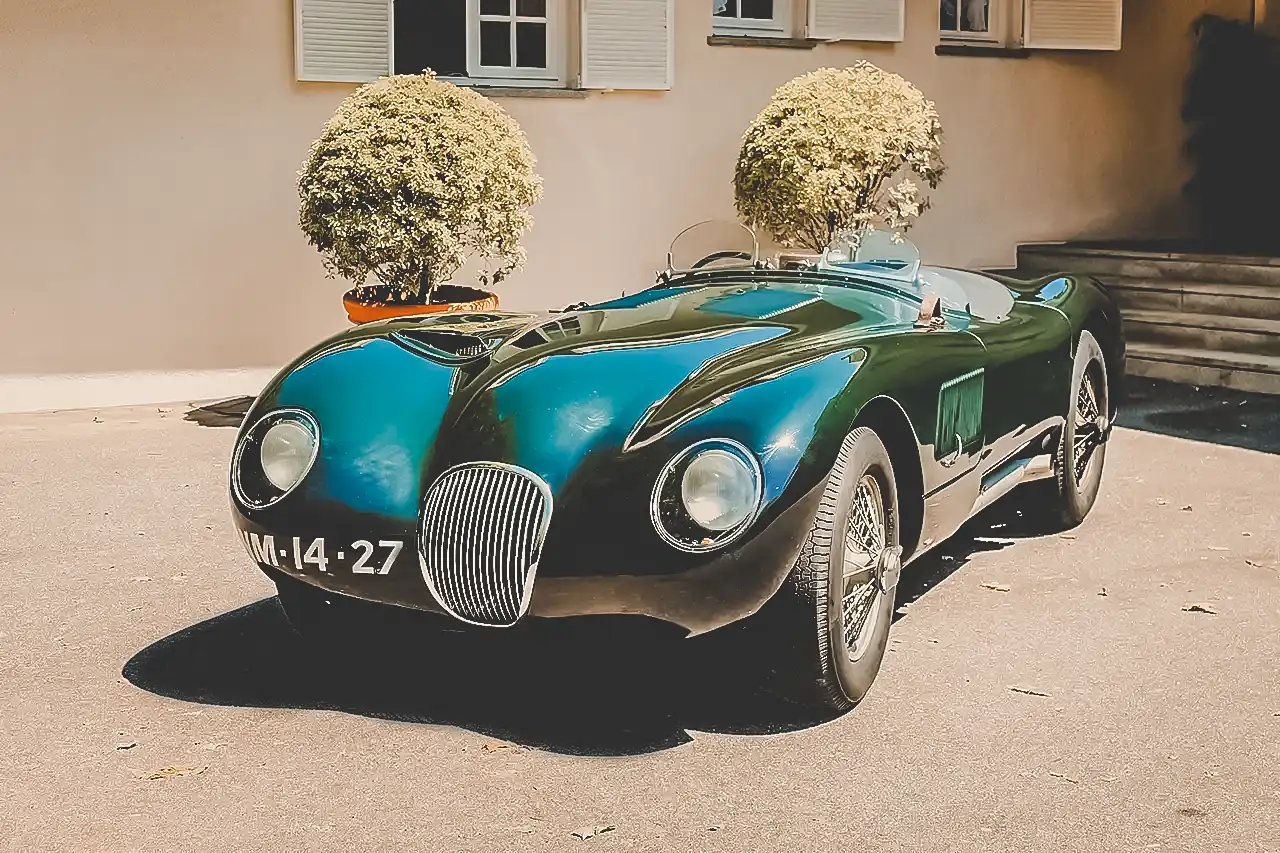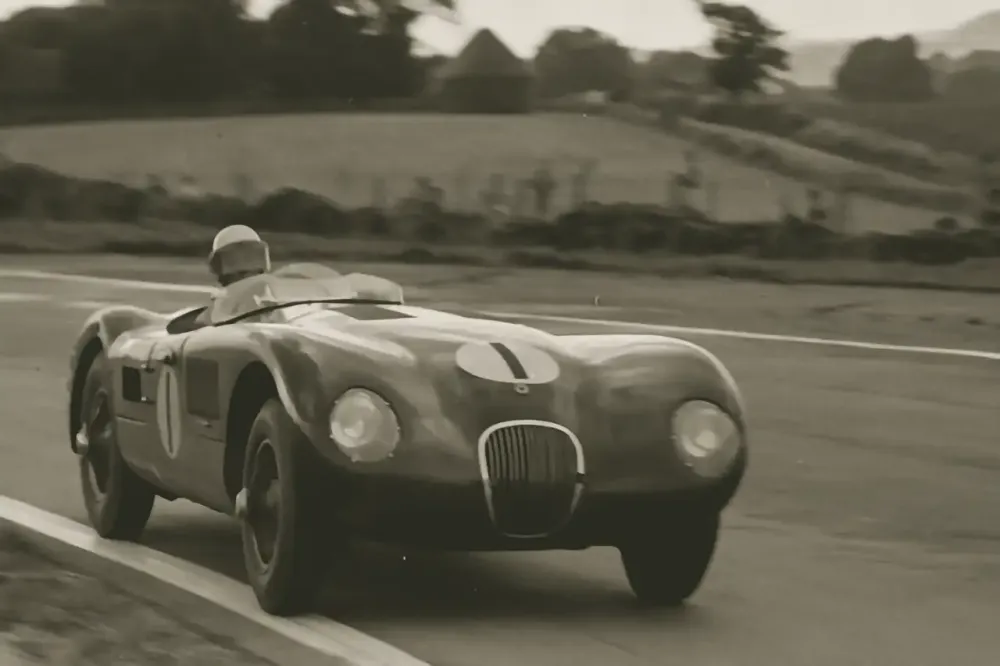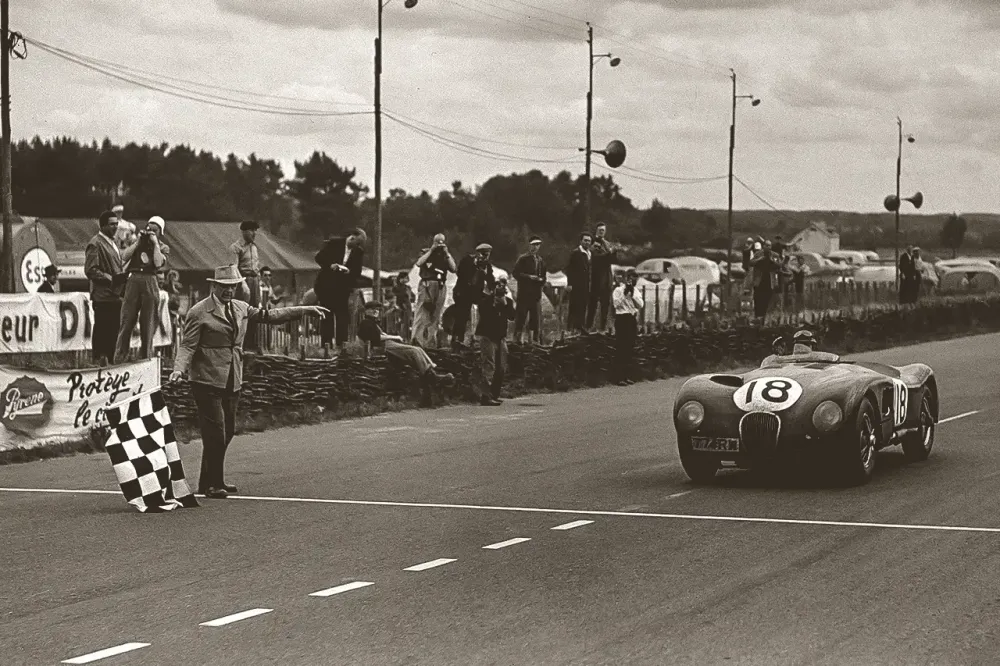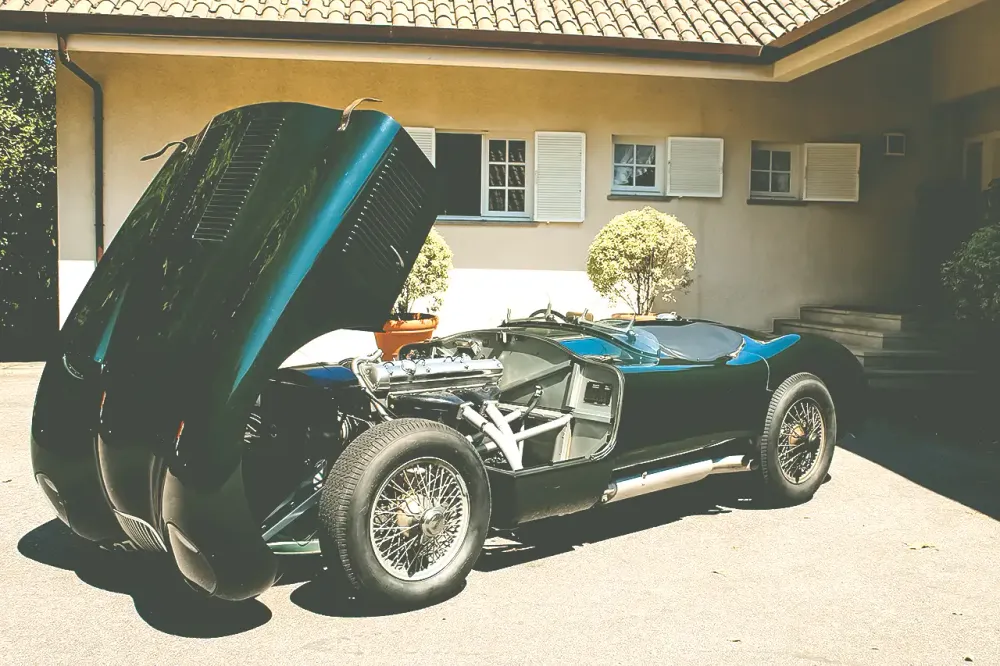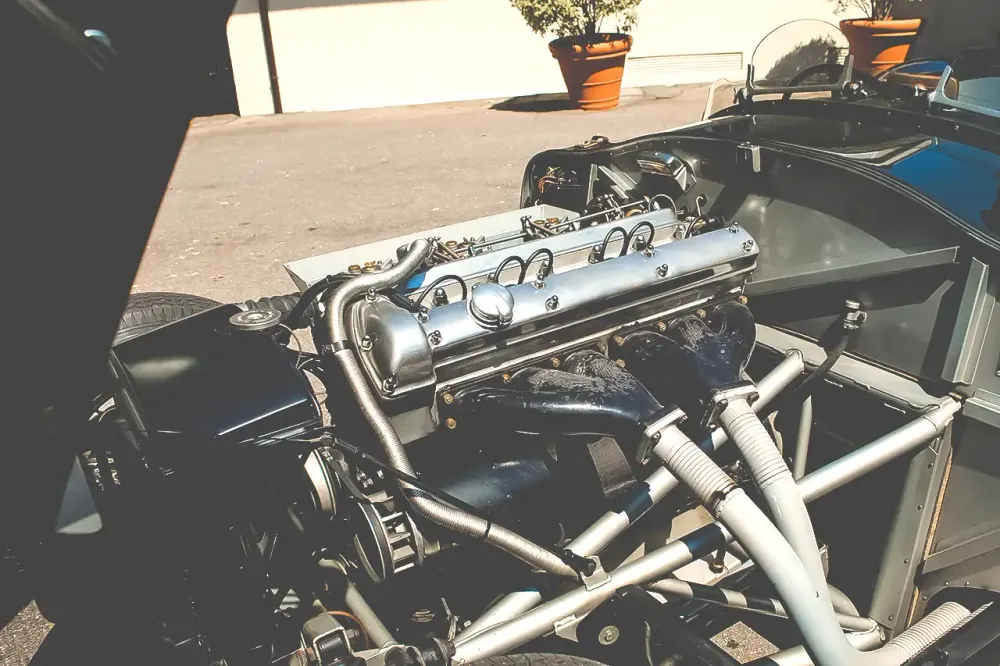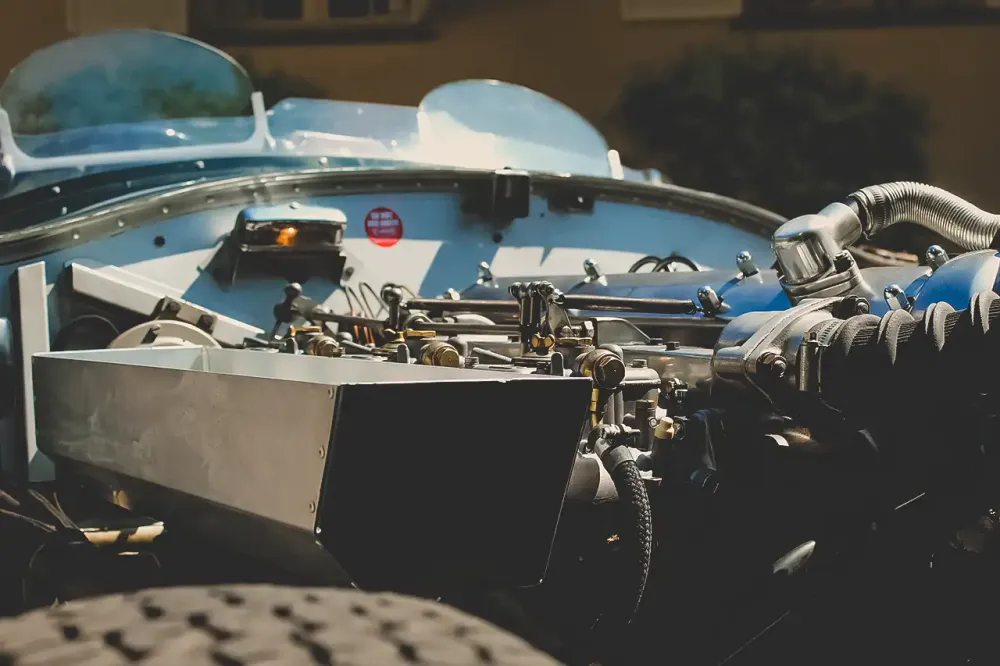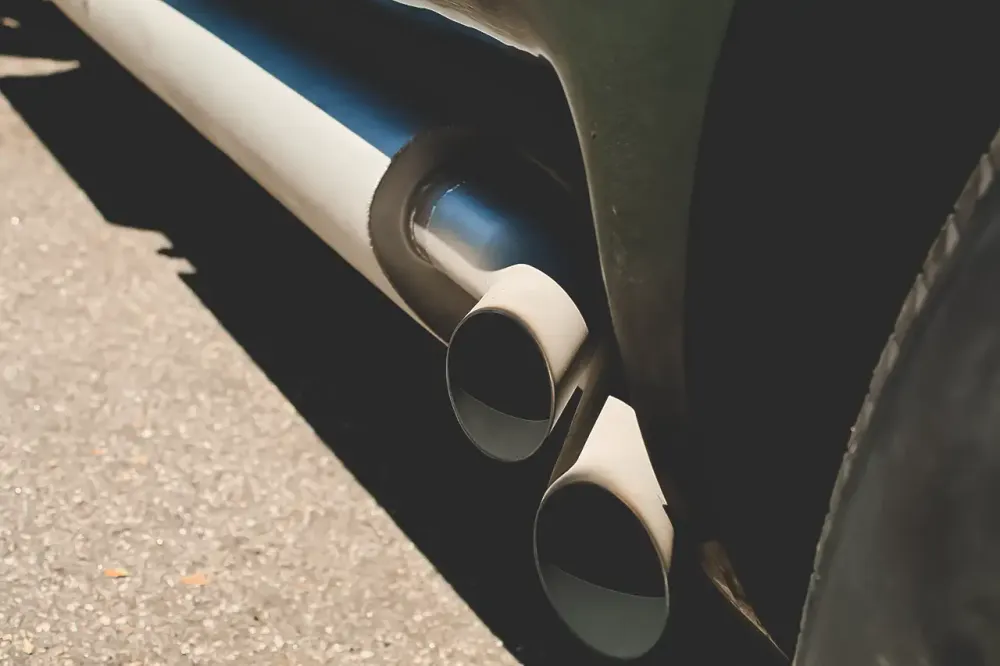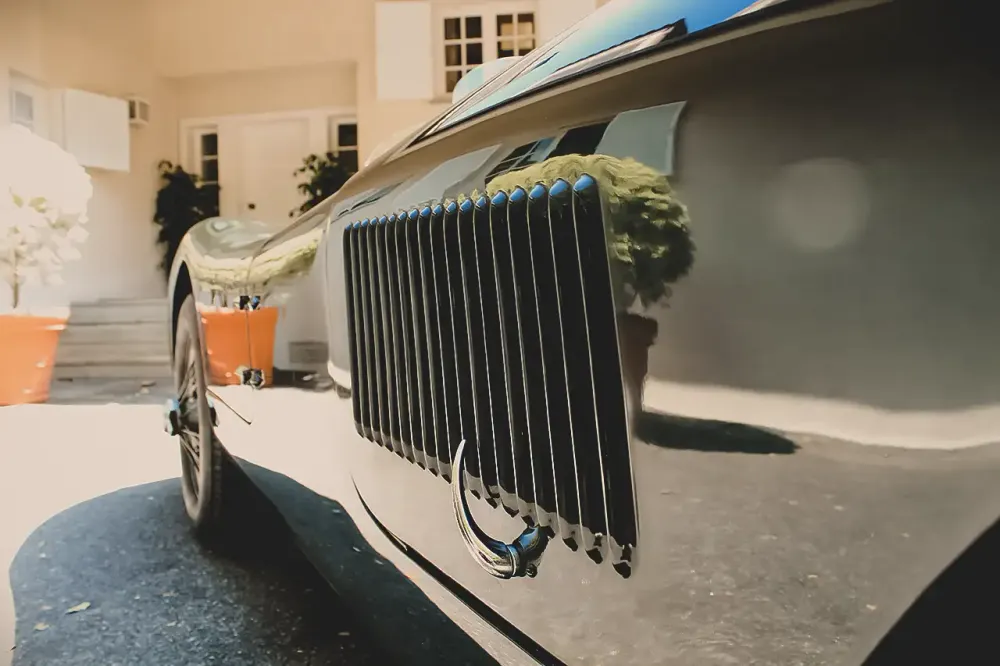Dreaming of C-type? This is your best chance.
The 1950s saw the writing of some of the most epic episodes of competitive motorsport and the the C-type story was one of them. A very elegant car that won Le Mans, in addition to dozens of victories in other important competitions and which is the ultimate example of Jaguar's power and William Lyons's boldness.
Today, a C-type remains one of the most desirable competition cars of all time, but with only 53 units built, it’s a difficult dream to achieve even for those with the four to seven million euros needed to buy one. If you opt for one of the original Lightweights, the sum can reach 13 million, as happened in Monterey in 2015.
Original C-type, was it little more than a road-going Jaguar?
In fact, the model was originally called the Jaguar XK120 C, with the “C” referring to the competition variant. This designation, which would be abandoned in favor of the name C-type, makes it clear that this model was effectively an evolution of the road-going Jaguar, but it wasn't just any Jaguar...
The XK120s made a splash in private hands at the 1950 24H of Le Mans, and this led William Lyons to allow engineer William Heynes to develop a variant with a tubular frame chassis and a aerodynamic aluminum body to fight for outright victory.
Immediate success
The C-type had everything going for it. In addition to being 350kg lighter than an aluminum XK120, it extrated 40hp more from the same 3.4 engine, reaching 200hp. Initially, it maintained the drum brakes, but it would be the first model to debut disc brakes (manufactured by Dunlop) in competition. The rear suspension is a rigid axle, and the front is independent with double wishbones, with torsion bars all-around.
In 1951 the debut took place at Le Mans, with Jaguar entering three cars. Two retired, but the third, driven by Peter Whitehead and Peter Walker, won overall, nine laps ahead of the runner-up, a Talbot-Lago T26.
Later in the year, Stirling Moss would win the Tourist Trophy with a C-type.
After a poor result at Le Mans in 1952, the brand returned for 1953 with three Lighweight models equipped with disc brakes, and got first, second and fourth places overall. A legendary career, which would only be beaten by its successor, the D-type.
A collector's dream.
With such credentials, the C-type naturally become a dream object for major collectors, but with few units produced, money doesn’t necessarily solve the problem. Therefore, and given the relative closeness between this model and the XK that serves as its basis, it didn't take long for C-type recreations to emerge, with different levels of accuracy.
Some had bodies made of fiberglass with shapes vaguely similar to the original. But for those who wanted the complete experience, there were proper tool room copies, that is, reproductions made partly from original Jaguar parts, whenever they exist, while all the rest is manufactured in a strictly identical way to the original model.
Some are so perfect that they can become FIA certified to compete alongside original examples and races such as the Goodwood Revival or the Le Mans Classic, among others.
Good enough to fool the experts
Among all those who dedicated themselves to reproducing the C-type, Peter Jaye is the name that stood out the most. A famous restorer of Jaguar competition models, he had full access to the original version to enable its exact reproduction, whether in dimensions, materials or specifications.
Proving its truthfulness, an episode became famous in which an Italian owner, having access to the paperwork of an original copy once wrecked in racing, used that identity to pass it off as an original, which he achieved with notable success. Not only did he manage to make it through the notably strict scrutineering from the historic Mille Miglia, he also managed to sell it as being a genuine item. Eventually, the fraud would end up being uncovered, which led to a lawsuit which didn't turn out cheap...
A nearly perfect example.
In total, Jaye Engineering manufactured a dozen examples, one of which was ordered in 1992 by a Portuguese collector, who kept until today and is now offering it for sale.
Unlike many which used later versions as the XK140, this one is based on a period-correct XK120, just like the original version, and uses the respective chassis number, as well as the 3442cc engine.
At the owner's request, this example has the 1953 specification, with three Weber 45s and the same air scoop over the bonnet, improving its performance and durability, as well as the Dunlop disc brakes, in this case coming from a XK150 and in every way like the original model.
Little but good use.
This magnificent car was the period equivalent of a current Le Mans “hypercar”, however, like with 43 of the original examples, it is road legal, with Portuguese license plates since new, in 1994.
Despite that, it was rarely driven on the road. As a keen enthusiast, its owner regularly had the car taken to the nearest circuit, where he enjoyed it in private sessions, without stress or risk.
Thus, this reproduction, in addition to being in every way a C-type, comes with the small marks of use that give him credibility, such as the marks of the heat radiated by the exhaust.
Details which place our minds in the racetrack, which could well be its destiny, may the future owner decide to get the FIA Historical Technical Passport that would open doors to the most important classic competitions in the world.
This particular example is still in Portugal, and can be yours for 400.000€. Although serious money, it's a fraction of the original item and you'd be buying some amazing experiences and memories.
Enquiries should be sent to this address.



